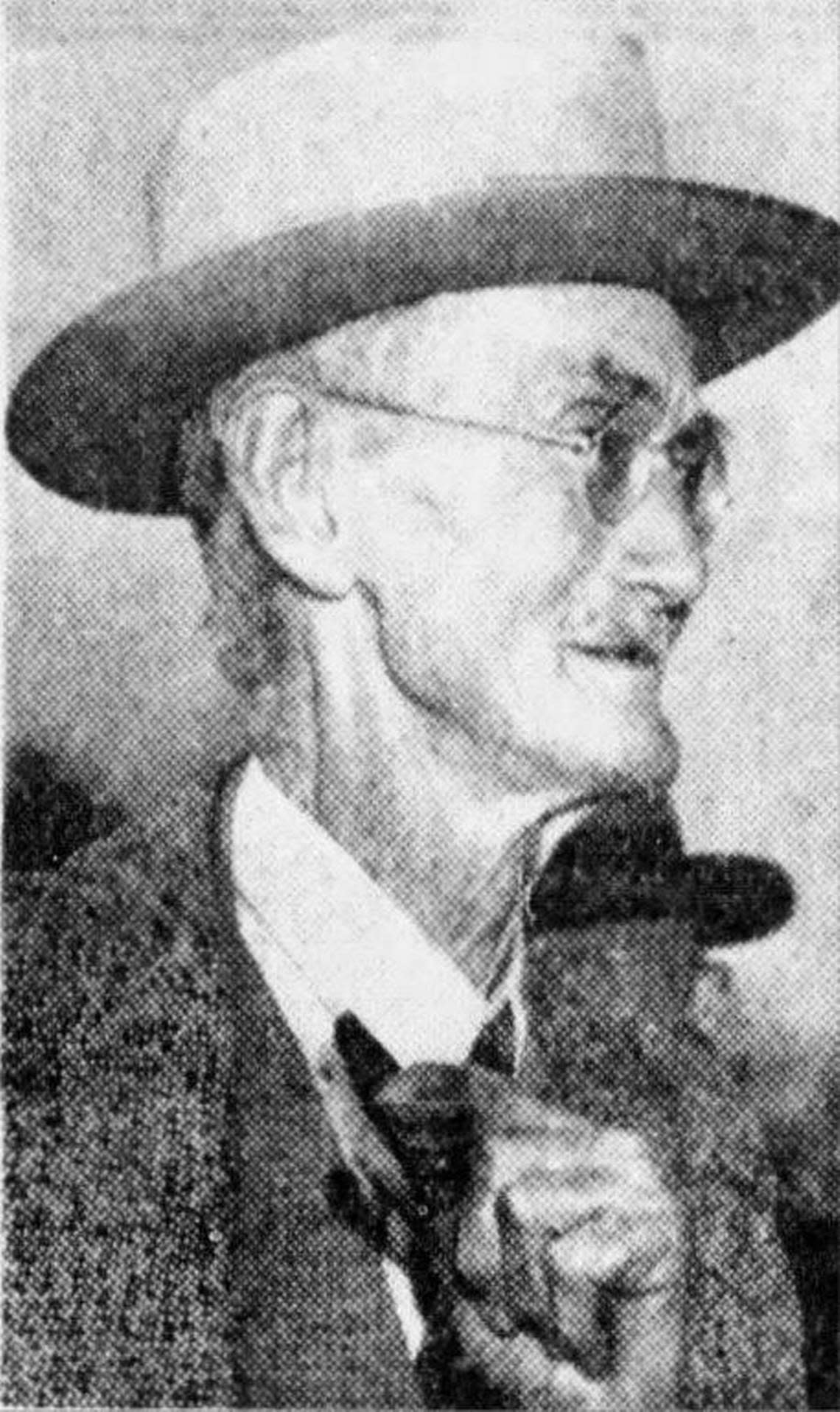This Fort Worth man stood against the civil rights for which Opal Lee fought. He lost.

- Oops!Something went wrong.Please try again later.
Fort Worth’s Opal Lee was in the news in June when Congress finally made Juneteenth a national holiday and more recently when she was recognized by the state Senate. The 94-year-old civil rights icon’s story includes how as a 12-year-old girl in 1939 her parents’ home was targeted by white segregationists opposed to African American people moving into their neighborhood. Opal Flake Lee grew up to become a voice for change in Fort Worth and beyond.
Another person deeply involved in those long-ago events has been largely forgotten because he was on the wrong side of history: Charles L. Stowe was one of Opal’s neighbors in the spring of 1939. At the time, he was much better known than anyone in the Flake family. He was a self-styled war veteran, publisher, would-be politician, and all-round gadfly.
He grew up in Sherman, one of three brothers in a distinguished family. His father, Charles Stowe Sr., made his mark as state superintendent of buildings and grounds, United States marshal for the Oklahoma Territory, and a pioneer father of Sherman. Charles Jr. attended Austin College before finishing his education as one of the youngest graduates of the University of Texas. After graduation, he worked as a printer before becoming editor of the Austin Evening Tribune. He came to Fort Worth in 1903 to work for the Fort Worth Record. When that work wasn’t exciting or lucrative enough, he jumped into the oil business, or as he called it, “the greatest game on earth.” By 1920 he was back in the publishing business as editor-publisher of Stowe’s Chronicle, a monthly magazine devoted to the “moral and material betterment” of the community. He would publish it semi-regularly for over a decade.
Charles had chutzpah and ambition to spare. In 1890 he was briefly a member of the state Volunteer Guard (a militia force). He never saw a day of combat, but he kept his uniform and rifle when he mustered out and marched proudly in veterans’ parades for the rest of his life. As an editor-publisher he styled himself after his first editor, W.C. Brann, the fiery, racist Austin newspaperman who died in 1898 when he was gunned down by an angry reader. In 1933 he entered the race for a seat on the Fort Worth city council, challenging drugstore king E.T. Renfro. He lost and went back to publishing Stowe’s Chronicle, not to make money but “to make America safe for Americans.”
He was a big believer in the Second Amendment, habitually carrying a pistol in defiance of both state and local laws.
In 1939, while living on East Morphy on the Near South Side, he finally found a cause he could embrace: keeping his neighborhood white. He bitterly opposed his neighbors selling out to Black people. When he learned that one man intended to do just that, Charles told him his house would be dynamited if he did and organized like-minded neighbors into an Anglo-Saxon Committee. A few months later he called on that neighbor again and this time opened fire. The neighbor returned fire, and they exchanged 13 shots, none of which hit its target. The Star-Telegram called it a laughable, “no-hit gunfight.” Police were equally forgiving, letting both men off but confiscating their pistols and extracting a promise that they would stay away from one another going forward.
The promise to be on good behavior did not extend to the Anglo-Saxon Committee, which posted signs around the neighborhood warning “Negroes Take Notice. Don’t Move into This Area!” As more white homeowners left, however, Black families bought their houses, which is how Opal’s parents, Otis and Mattie Flake, moved into the house at 940 E. Annie St. on June 16. Tensions rose in the next three days until on Monday, June 19, a day of special significance even then to Black people, a mob of 500 white people gathered in front of the house. The Flakes and their three children fled their home, and the mob proceeded to break windows, throw their furniture into the yard, and do other damage. Contrary to later accounts, they did not set the house on fire.
Law had enforcement did nothing except plead for calm. While most people either decried the violence or kept their mouth shut, Charles Stowe went on record still opposed to “negro encroachment” in white neighborhoods.
Stowe himself did not stick around the neighborhood but moved to 2712 Ave. C in the Polytechnic section. On Sept. 3, 1943, his home was destroyed by a mysterious fire. He was not at home at the time. The blaze burned up his old uniform, a letter from Theodore Roosevelt, and his musical paraphernalia.
Though Presbyterian himself, Charles worked as the night watchman at First Baptist Church for many years. It was an important source of income that supplemented a meager pension and gifts from friends. When Pastor J. Frank Norris was arrested for killing Dexter Chipps in 1926, Stowe was one of 30 men who signed the preacher’s bond. Subsequently, he moved into quarters in the church basement. On the night of Feb. 11, 1951, he was there when he was taken ill and was rushed to City-County Hospital. He recovered but was moved to a sanitarium for the indigent. He suffered a stroke in 1952 and died on Oct. 21, 1954, at the age of 80.
Opal Flake Lee not only outlived him; her star shines so much brighter than his ever did, and her causes of racial equality and civil rights have been embraced by the nation while his of racial segregation and white supremacy are widely denounced. Charles L. Stowe is remembered today only for the wrong reasons while Opal Lee keeps marching on.
Author-historian Richard Selcer is a Fort Worth native and proud graduate of Paschal High and TCU.

